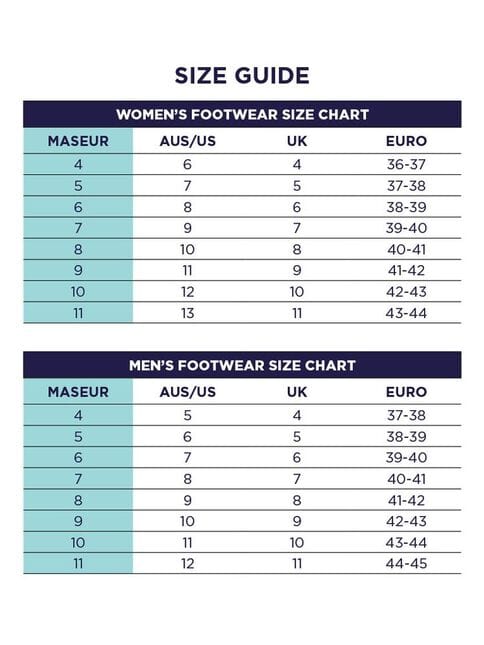The Ultimate Guide to Converting Australian Shoe Size to EU for Fret-Free Parenting
Hey there, amazing parents! ? Are you facing the delightful challenge of buying your child the perfect pair of shoes, only to be greeted by the baffling array of sizes that differ from one corner of the globe to another? Don’t fret! We’ve woven together this invaluable guide designed specifically to aid you in effortlessly converting Australian children’s shoe sizes to European sizes. Say hello to confident shopping and goodbye to those perplexing size charts!
Understanding Australian and EU Shoe Sizing
First things first, let’s unwrap the mystery behind Australian (AU) and European (EU) shoe sizes. While AU sizes are quite similar to UK sizes, EU sizes are based on the length of the foot in centimeters, and they don’t differentiate between gender or age. It’s like a universal language for feet! Knowing this will be your secret weapon in tackling shoe size conversion like a pro.
Why Size Conversion Matters for Your Little Munchkins
As a parent, you know that kids outgrow their shoes faster than a bunny hops! ? But more importantly, having properly fitting shoes is critical for your child’s foot development and overall comfort throughout their action-packed days. Incorrect sizing isn’t just a nuisance; it can lead to all sorts of grumbles like blisters, corns, or even long-term foot problems. So, let’s make sure those tiny toes are nestled in just right!
Step-by-Step: AU to EU Shoe Size Conversion
Ready to become a shoe size wizard? ? Here’s your step-by-step guide to converting Australian children’s shoe sizes to European measurements:
- Measure Up: Begin by measuring your child’s foot length. A simple way is to have them stand on a piece of paper, mark the tip of the longest toe and the heel, and measure the distance between the two points in centimeters.
- The Chart is Your Friend: Equip yourself with a reliable size chart as your trusty companion. We’ll provide you with a detailed one below that pairs AU sizes with their EU counterparts.
- Find the Perfect Fit: Locate your child’s AU shoe size on the chart and follow the row to find the right EU shoe size. Remember, every brand might be slightly different, so use this as your golden rule, but be open to trying on a size up or down to find that Cinderella-fit for your youngster.
Note: Keep in mind that shoe sizes can also vary significantly from brand to brand, so it’s always best to check the specific sizing guide provided by the shoe manufacturer whenever possible.
Your Handy Australian Shoe Size to EU Conversion Chart
And now, the moment you’ve been waiting for – the actual AU to EU shoe size conversion chart! This will be your go-to resource when shopping, whether browsing online stores or hitting the pavement at your local shoe shop. ?? Let’s sprinkle some of that size-converting magic onto your shopping experience:
Remember, this guide is just the start of your journey in mastering the art of shoe size conversion from Australian to European standards. With every little step (and shoe) your child takes, you’ll find yourself becoming more adept at making the right size choices. Now, get out there and arm yourself with a measuring tape, this guide, and a sprinkle of patience – you’ll be sorting those sizes like a champ in no time! And remember, every pair of shoes is an adventure waiting to happen for your little one’s feet!
We know shoe shopping for kids can seem like a task more daunting than memorizing all the nursery rhymes under the sun, but armed with the right information and a dash of confidence, you’ll tackle this task like the superhero parent you already are! Stay tuned for more insights-including an in-depth look at different types of children’s footwear and top tips to ensure you’re choosing the best shoes for your child’s growing feet.
Keep those tiny feet happy and healthy, and let them lead your child to wonderful places. Stay tuned for our continued guide where we will delve even further into ensuring the best fit for your child’s footwear — because nothing says love like the perfect pair of snug, comfy shoes. ? Until then, happy shoe shopping!

5 Essential Tips for Preparing to Convert Australian Shoe Sizes to EU
Before we dive into the nitty-gritty of size conversion, let’s take a peek at five things parents should know when preparing for this transformation:
- Feet Measurement Is Key: Since little feet are constantly growing and changing, frequent measurement is crucial. Aim to measure your child’s feet every few months to keep up with their rapid growth spurts and ensure a great fit.
- Understand the Brands: Familiarize yourself with the brands you’re keen on. Some European brands may fit differently compared to Australian ones, even with size conversion. Always look up the brand’s specific sizing chart for the best results.
- Room to Grow: Leave a little wiggle room. When converting sizes, it’s wise to leave about a thumb’s width of space in front of the toes for growth and to ensure your child’s comfort as they scamper about their day.
- Width Matters Too: Consider the width of your child’s feet. Some European brands offer a range of width fittings, so having a width measurement can be just as important as knowing the length.
- Check Returns Policies: An often-overlooked aspect is the returns policy, especially when shopping online. Ensure you can exchange or return shoes if the size conversion doesn’t pan out perfectly. This will save you from a lot of potential headaches!
With these quintessential tips up your sleeve, you’ll be well on your way to a stress-free shopping experience. And now, without further ado, let’s unveil the nitty-gritty aspects of converting those shoe sizes. We’ll talk about foot anatomy, the importance of flexibility in the sole, recognizing signs that it’s time for a new size, and selecting shoes for different occasions and foot types.
Understanding the complexity of little feet will empower you to make educated decisions when purchasing shoes. Foot anatomy is more intricate than one might think; children’s feet have a unique structure and are still developing, requiring adequate support from their footwear.
Flexibility in the shoe sole is vital for natural foot movement, but it’s also crucial to have enough support to protect those precious feet. Recognizing signs that it’s time to get new shoes can be a bit tricky — children may not articulate that their shoes are feeling tight. Look out for worn-down soles, toe marks near the front of the shoes or listen carefully if they mention their feet are feeling squished.
When it comes to selecting shoes for different occasions, it’s essential to consider the specific needs of the activity. Does your child need sturdy shoes for school, or perhaps breathable sandals for those hot summer days?
Lastly, every child’s foot is unique, so it’s important to cater to specific foot types. Some children may require extra arch support or have wider feet that would be comfier in shoes designed for such shapes.
These essentials, coupled with our guide, will make the road to converting Australian children’s shoe sizes to European a walk in the park. So, measure those feet, scan that chart and get ready for some victorious shoe shopping that leaves you and your kiddo smiling from heel to toe!
Stay on top of your shoe shopping game and help your child step confidently in perfectly fitting shoes that support their adventures, growth, and vibrant childhood memories. Let’s make each step a comfortable and joyous one on their journey of endless exploration and fun!
For more great articles please see here. For more information see here
Disclaimer
The articles available via our website provide general information only and we strongly urge readers to exercise caution and conduct their own thorough research and fact-checking. The information presented should not be taken as absolute truth, and, to the maximum extent permitted by law, we will not be held liable for any inaccuracies or errors in the content. It is essential for individuals to independently verify and validate the information before making any decisions or taking any actions based on the articles.




